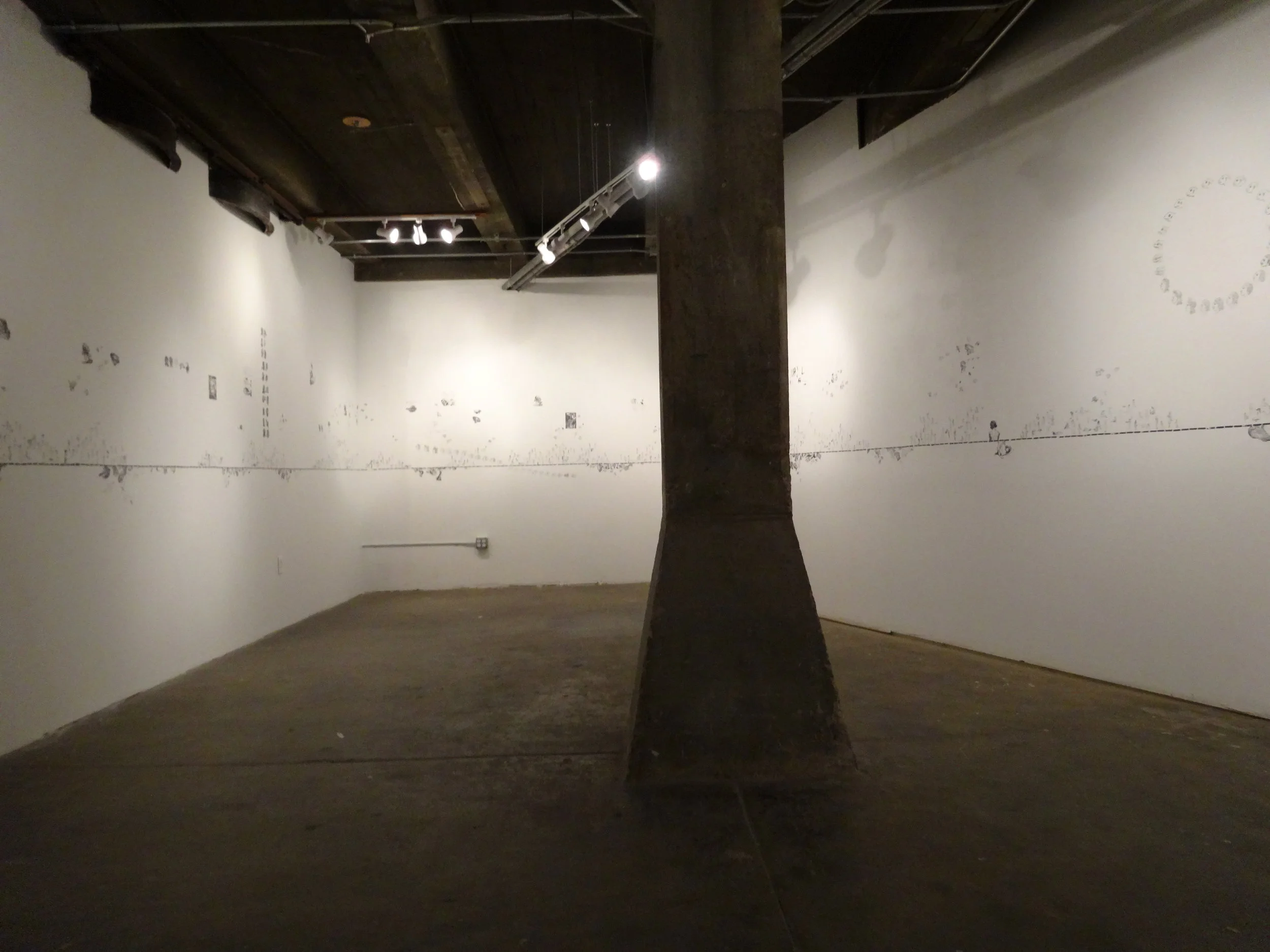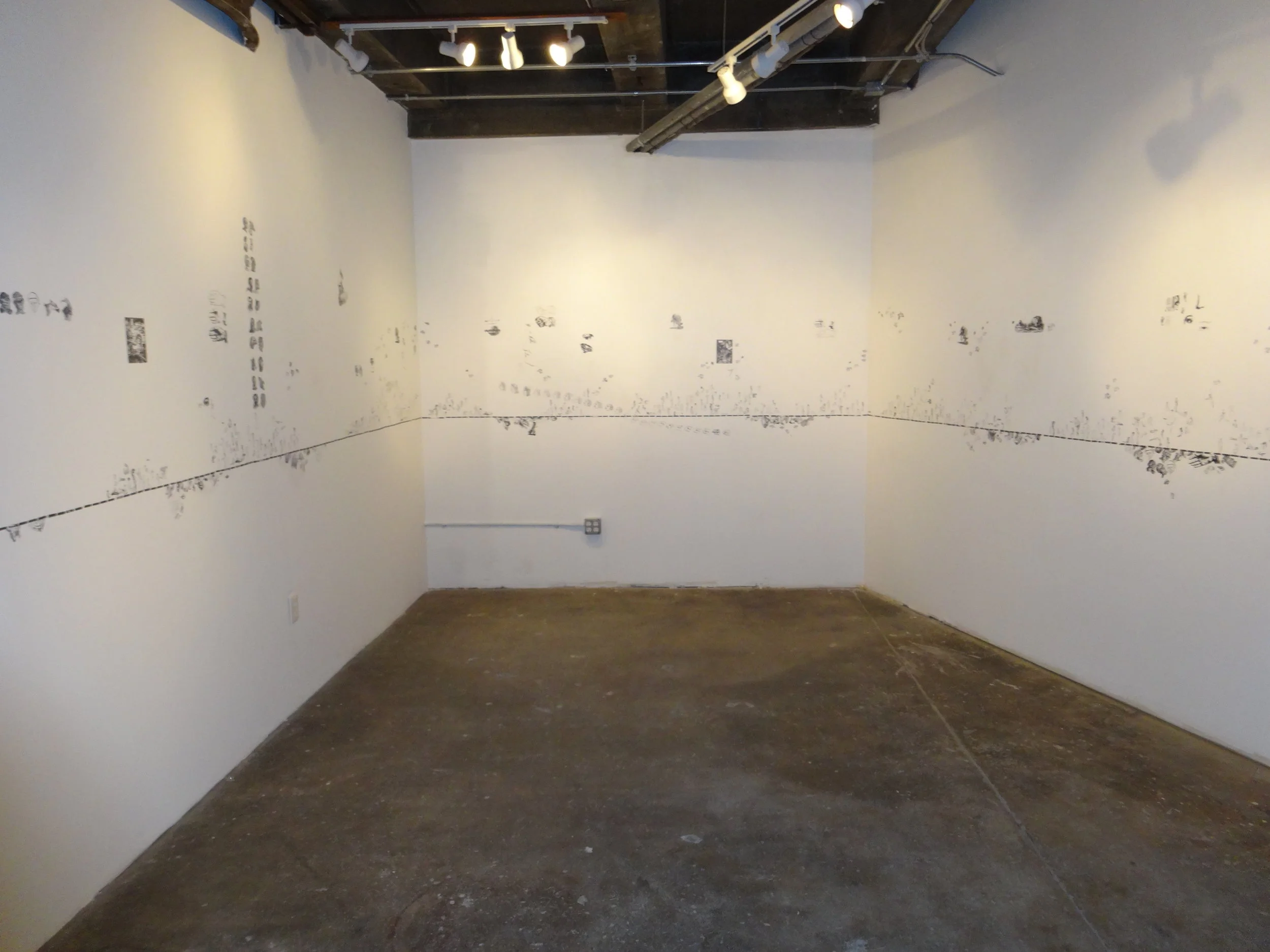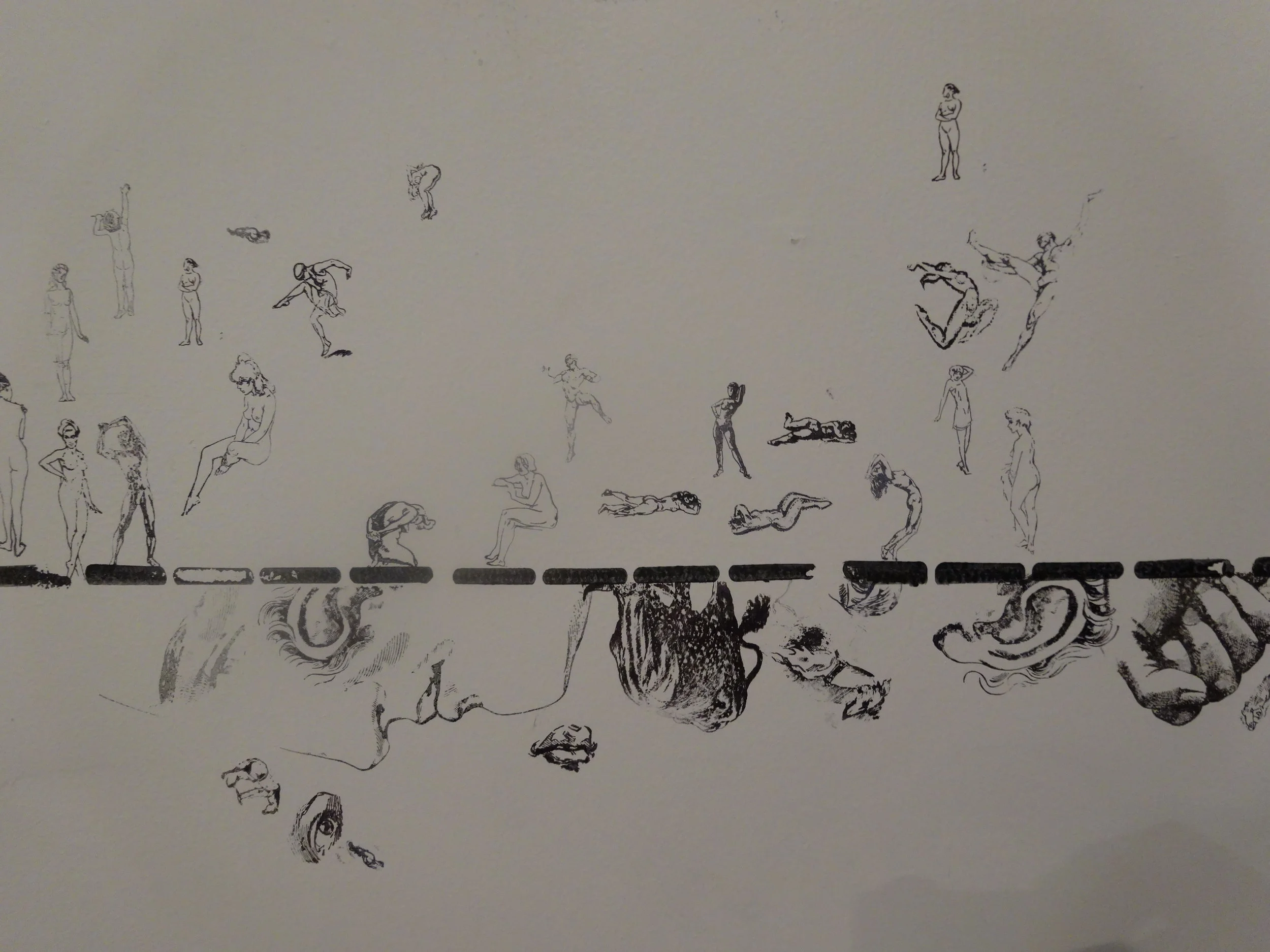The Line of Lode, Philadelphia 2013
The Line of Lode, Crane International Projects Space, Lower Gallery, Philadelphia, PA (14 Nov. – 20 Dec, 2013)
Exhibition Curated by Professor Nick Kripal, catalogue essay by Dr George Petelin.
Ratonale for The Line of Lode
The title aims to evoke an appropriate mining metaphor for an Australian exhibition in US and the thematic ‘mining’ of a massive collection of images sourced from historical texts. The configuration of the exhibition was a unique response to the subterranean nature of the below-ground space and its irregular shape. Also, given the nautical connotations of the triangulated space, a low line was printed around the gallery walls in the manner of an inverted plimsoll line while also acting as a potential horizon dividing above and below ground. Despite this layering of reference points, above all, the investigation is configured as an “Anthropology of Images” to test Hans Belting’s proposition that the mental image is the only viable theoretical conception of the image today.
When this show was mounted in 2013 I had been exploring the interaction of the digital with the traditional printed image for more than a decade. This exhibition brings together the most direct, primitive printing technology and the full range of digital and new technology in a seamless interaction testing the status of medium and image. The images that were laser-cut into rubber are sourced from drawing and physiognomy manuals (along with stamps made from earlier works by the artist).
The rubber stamp is the medium of the stock or generic image; one of the reasons the drawing models are so comfortably carried by the ink medium. Nevertheless, the physicality of the ink images on the gallery wall implies their transience since, unlike a mural, they will be erased or painted over before the next exhibition. Any suggestion that the medium resides in the surviving rubber stamp not the ink on wall, is only a semantic distinction, since the reversed image on the stamp surface has the potential to create the image just as does the binary computer code that can print or form the image on a screen. Such focus on the tangible, material or technical aspects of these images only confuses our understanding of their real significance as mental images that are carried through time and across cultures through the medium of the human mind/body as Hans Belting has suggested.
Copyright © (2013 - 2020) Ross Woodrow --All Rights Reserved




